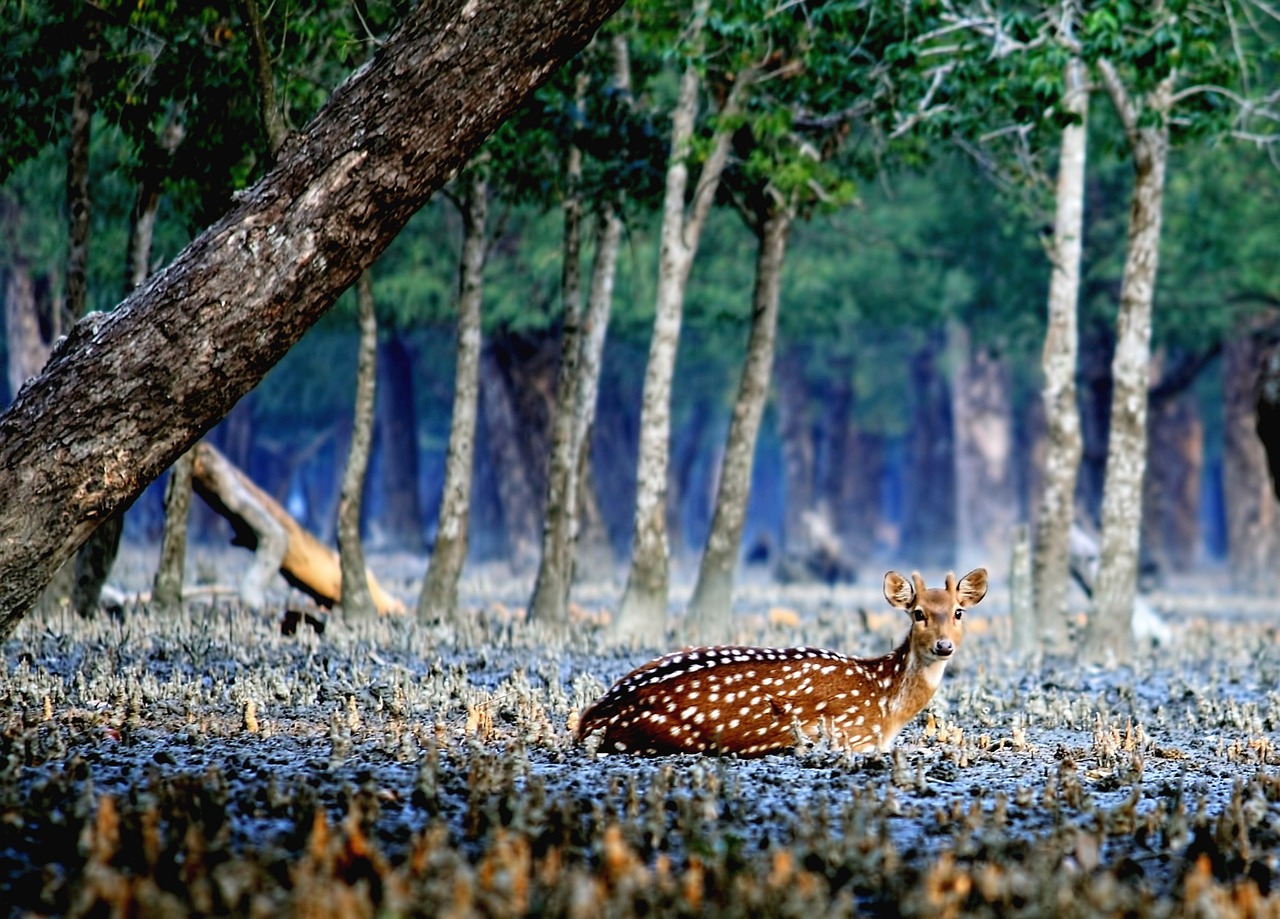India is home to 40 UNESCO World Heritage Sites in India. One of these includes the majestic Sundarbans. The Sundarbans mangrove forest is one of the largest such forests in the world (140,000 ha). It lies on the delta of the Ganges, Brahmaputra and Meghna rivers on the Bay of Bengal. It is adjacent to the border of India’s Sundarbans World Heritage site inscribed in 1987.
The site is intersected by a complex network of tidal waterways, mudflats and small islands of salt-tolerant mangrove forests. The area is known for its wide range of fauna, including 260 bird species, the Bengal tiger and other threatened species such as the estuarine crocodile and the Indian python.
The Sundarbans
The Sundarbans National Park forms an integral part of the Sundarbans deltaic region and was established in 1984. The national park, is also a biosphere reserve and tiger reserve. It was designated as a Biosphere Reserve by UNESCO in 2001. The UNESCO site has also been recognised as ‘Wetlands of International importance’ under the Ramsar Convention in January 2019.
The Sundarbans region which contains the world’s largest mangrove forests, was badly damaged by Cyclone Amphan in 2020. It is the only mangrove forest in the world inhabited by tigers.
Flora and fauna
In February 2023, birders, wildlife enthusiasts and forest officials sighted 145 different bird species during the first Sundarban bird festival. Among these, two threatened bird species of the Sundarbans, Eurasian Curlew and Lesser Sand Plover, were also spotted. Furthermore, birders were able to spot seven of the 12 species of kingfishers found in the Sundarbans.
Zoological Survey of India, (ZSI) in 2021, had recorded 428 bird species in the Sundarbans which is one-third of all the avian species found in the country.
The Sundarbans is of universal importance for globally endangered species including the Royal Bengal Tiger, Ganges and Irawadi dolphins, estuarine crocodiles and the critically endangered endemic river terrapin (Batagur baska).
The Sundarbans provides a significant example of on-going ecological processes as it represents the process of delta formation and the subsequent colonization of the newly formed deltaic islands and associated mangrove communities. These processes include monsoon rains, flooding, delta formation, tidal influence and plant colonization.














